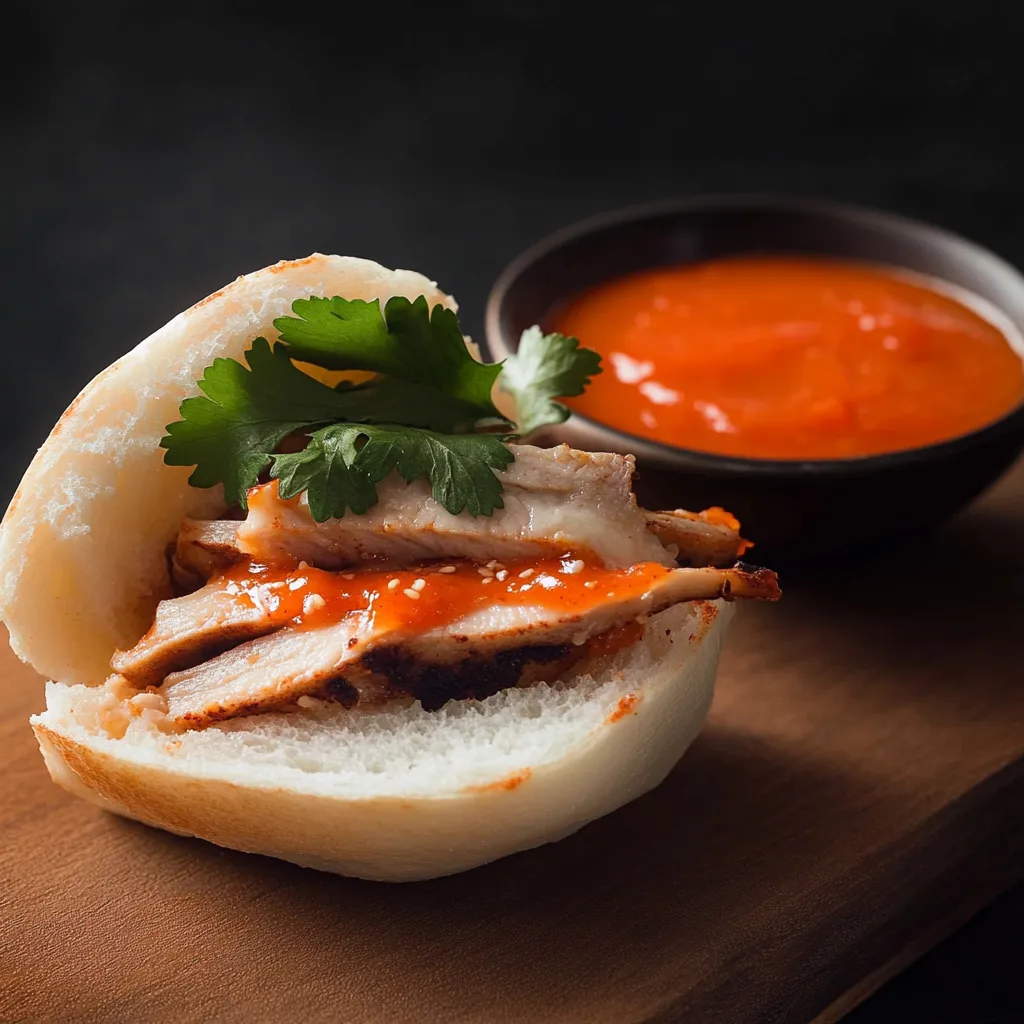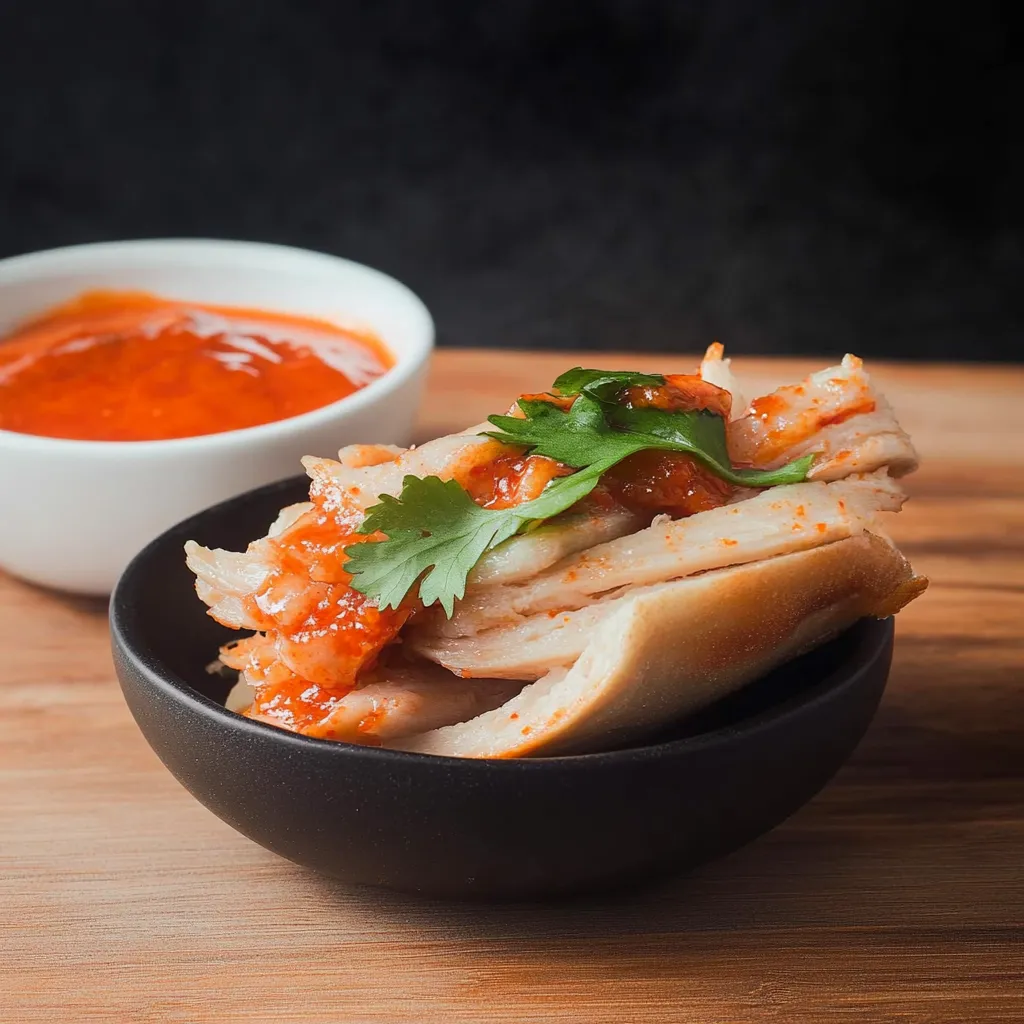 Pin it
Pin it
Gochujang mayonnaise delivers a creamy kick with a touch of heat that instantly upgrades everything from sandwiches to roasted vegetables. This simple condiment is a staple in my fridge and a hit at gatherings thanks to its irresistible blend of umami and richness.
The first time I made this for burgers my friends kept asking for the recipe by the end of dinner. It became our go-to sauce for everything from fries to bowls and it seriously never gets old.
Ingredients
- Gochujang: Korean chili paste adds heat and a deep savory note, choose one with no added corn syrup for best taste
- Mayonnaise: Brings creamy richness, look for full-fat real mayo for best texture
- Kewpie mayonnaise (optional): For extra silkiness and subtle sweetness, choose the iconic Japanese variety if you want a more complex finish
- Garlic (optional): For an aioli-style kick, use fresh and crush well for smoothness
Step-by-Step Instructions
- Combine Ingredients:
- In a small bowl, measure the gochujang, mayonnaise, and if using, the kewpie mayonnaise
- Mix Thoroughly:
- Use a spoon or small whisk to blend everything until you see no more streaks and the color is uniform
- Adjust Flavor:
- Taste a dab and add a little more gochujang if you like it spicier or extra mayo for a milder version
- Add Garlic for Aioli Option:
- If you want a gochujang aioli style, grate or crush half a clove of garlic and mix it in. Let it rest for five to ten minutes for the flavors to mellow and infuse
- Chill or Serve Immediately:
- Use right away or cover and let it sit in the fridge for up to a day, which helps the flavors deepen even more
 Pin it
Pin it
Gochujang is my favorite ingredient here because of its magical way of adding both heat and depth without overwhelming the other flavors. My family loves mixing it into mayo for tacos and as a last-minute dip for roasted sweet potatoes.
Storage Tips
Store your gochujang mayonnaise in an airtight container in the refrigerator. It will stay fresh for about one week, and the flavor gets deeper as it sits. Be sure to always use a clean spoon when scooping it to prevent contamination and spoilage. If the texture begins separating, just give it a quick stir before using.
Ingredient Substitutions
If you cannot find kewpie mayonnaise, simply use all regular mayo and add a pinch of sugar or a dash of rice vinegar for a similar tangy note. For a plant-based version, opt for vegan mayonnaise. In a pinch, sambal oelek or sriracha can work in place of gochujang, though the flavor will be less earthy.
Serving Suggestions
Use your gochujang mayo on anything that loves a little richness and heat. It is outstanding as a sandwich spread, especially on burgers or chicken sandwiches. Drizzle over grain bowls, toss with roasted vegetables, or offer as a dip for fries, shrimp, or dumplings. I even love it with scrambled eggs on a breakfast sandwich for an easy brunch upgrade.
Cultural and Historical Context
Gochujang is a cornerstone of Korean cooking, and its sweet heat makes it perfect for fusion condiments like this. Mixing traditional Asian flavors with Western ingredients like mayonnaise makes this sauce an easy bridge between cuisines. Whether you are new to Korean flavors or grew up with them, this recipe is a playful way to bring them onto your everyday table.
 Pin it
Pin it
This versatile sauce proves that a few pantry staples can transform even simple meals into something memorable. I always keep a jar ready to go, and it has saved many last-minute dinners from feeling basic or boring. If you like bold flavors, this is a game-changer you will remake again and again.
Frequently Asked Questions
- → Can I use regular mayonnaise instead of kewpie?
Yes, regular mayonnaise works well. Kewpie adds extra richness but is optional in this spread.
- → How spicy is the gochujang mayo?
It's moderately spicy. Adjust gochujang for more or less heat to suit your taste.
- → What dishes pair well with this spread?
Try it on sandwiches, burgers, fries, rice bowls, or as a dip for vegetables and meats.
- → Is garlic necessary for this condiment?
No, but adding garlic turns it into a bold aioli-style sauce with more depth.
- → How long does leftover gochujang mayo keep?
It stays fresh in the fridge for up to 5 days in a sealed container.
